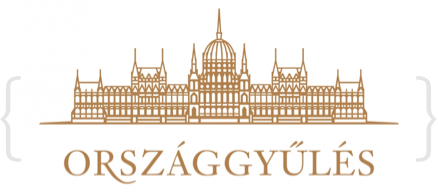The EU integration process
Why do we celebrate the Europe Day on 9 May?
The European Union was set up with the aim of ending wars and creating peace in Europe.
First, the French foreign minister Robert Schuman proposed on 9 May 1950 a plan for the European Coal and Steel Community, which was created in 1951 by 6 founding states: Belgium, France, Germany, Italy, Luxemburg and the Netherlands. Building on its success, the cooperation was expanded to other economic sectors: the European Economic Community and the European Atomic Energy Community were finally established in 1957 with the same members. This cooperation evolved to the organization that we call European Union today.
Further on six waves of enlargement rounds have increased the number of Member States to 28. These rounds were (the 2004 and 2007 are considered as one round). On 31 January 2020, the United Kingdom has left the EU, following a referendum organised in June 2016.
1973 Denmark, Ireland and the United Kingdom
1981 Greece
1986 Spain and Portugal
1995 Austria, Finland and Sweden
2004 Cyprus, the Czech Republic, Estonia, Hungary, Latvia, Lithuania, Malta, Poland, Slovakia and Slovenia
2007 Bulgaria and Romania
2013 Croatia
2020 31 January – The UK has left the EU
February/March – EC puts forward a proposal to move forward the EU integration process - Enhancing the accession process – A credible EU perspective for the Western Balkans - further endorsed by the Council of the European Union
In early 2020 there are seven countries in the accession process with different statuses: Albania, Bosnia and Herzegovina, Kosovo (under UNSCR 1244/99), Montenegro, Northern Macedonia, Serbia and Turkey.
What are the steps in the EU accession process and where is now Bosnia and Herzegovina in it?
1. Preliminary phase: the country that aspires to accede to the European Union establishes a contractual relationship with the EU. This means that an association agreement – in case of BiH the SAA – is signed between the so-called potential candidate country and the European Union. This treaty has to be ratified by the potential candidate country and all EU Member States and then enters into force. This is already fulfilled by Bosnia and Herzegovina.
2. A credible application is submitted to the EU (practically to the Member State holding the rotating six-month presidency of the EU).
3. The main initiating EU institution, the European Commission makes an initial evaluation on the application and submits its opinion to the Council of the European Union, being the EU body where the representatives of the EU Member State governments work.
4. The Council of the European Union decides to grant the applicant a candidate country status or not.
5. If yes, the next step is to open accession negotiations. Once this is done – not automatic –, the European Commission checks in detail the candidate country’s legal system in a process known as ‘screening’. The screening report identifies what needs to be modified in the candidate country in order to comply with the rights and obligations binding for all EU Member States (also known as, from the French originated word ‘acquis’).
6. For the accession negotiations the so-called EU acquis is divided into 35 chapters, each of which covers a specific policy area, such as agriculture, environment, justice and fundamental rights or free movement of persons, goods, services, capital, etc. The two sides, the candidate country and the EU agree what should be changed and how. The negotiation process aims to help candidate countries prepare to fulfil the obligations of EU membership which usually requires several years.
7. After every criterion has been fulfilled, and every chapter has been closed, the agreements reached are set out in an accession treaty. After the text gained the support of the European Commission and the Council of the European Union, the EU’s directly elected body, the European Parliament should give its consent to the treaty which then must be signed by the candidate country and all EU Member States. After this the candidate country becomes an acceding country.
8. After the accession treaty has been signed, it must be ratified by the acceding country and each individual EU Member State according to their constitutional rules (e.g. parliamentary vote, referendum).
9. The acceding country then becomes an EU Member State on the date specified in the accession treaty.
Legal basis
The relations of the EU with the countries of the Western Balkans take the form of the Stabilisation and Association Process (SAP). The progress achieved in the SAP leads to the establishment of a contractual relationship between a country and the EU known as the Stabilization and Association Agreement (SAA). On 1st June 2015 the Stabilization and Association Agreement between the European Communities and its Member States and Bosnia and Herzegovinaentered into force and replaced the Interim Agreement on trade and trade related matters, which was in force since 1 July 2008.
The SAA is a tool that provides the formal mechanisms and timelines of reforms that will bring BiH closer to EU standards.
The agreement:
• establishes a free trade area between the EU and Bosnia and Herzegovina;
• identifies common political and economic objectives with the aim of political stabilization and swift transition to market economy in BiH;
• encourages regional co-operation;
• serves as a tool that by full and effective implementation serves a prerequisite for further steps towards the EU accession process.
By the SAA existing laws and future legislation of BiH shall be gradually made compatible with the EU law and fully implemented.
Chronology of relations between EU and BiH by BiH Directorate of European Integration

Bosnia and Herzegovina

Bosnia and Herzegovina

Republika Srpska


 ABOUT TWINNING
ABOUT TWINNING


